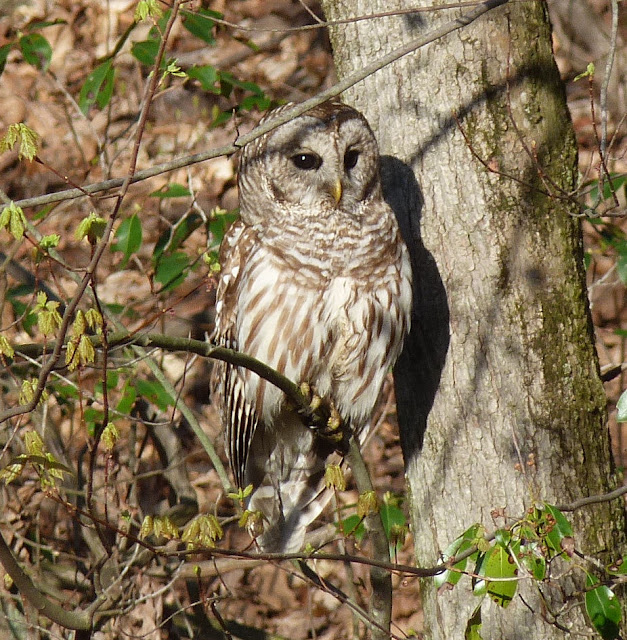About 8am today the Barred Owl flew in and landed at the edge of the woods. About 15 minutes later another one flew to an adjoining tree. It was wonderful to see both of them. We hear them calling at night and early morning.
The Barred Owl hunts by waiting on a high perch at night, or flying through the woods and swooping down on prey. A Barred Owl can sometimes be seen hunting before dark. This typically occurs during the nesting season or on dark and cloudy days. Daytime activity is often most prevalent when Barred Owls are raising chicks. However, this species still generally hunts near dawn or dusk.
The Barred Owl's nest is often in a tree cavity, often ones created by pileated woodpeckers it may also take over an old nesting site made previously by a red-shouldered hawk, cooper's hawk, crow, or squirrel. It is a permanent resident, but may wander after the nesting season. If a nest site has proved suitable in the past they will often reuse it as the birds are non-migratory. In the United States, eggs are laid from early-January in southern Florida to mid-April in northern Maine, and consist of 2 to 4 eggs per clutch. Eggs are brooded by the female with hatching taking place approximately 4 weeks later. Young owls fledge four to five weeks after hatching. These owls have few predators, but young, unwary owls may be taken by cats. The most significant predator of Barred Owls is the Great Horned Owl. The Barred Owl has been known to live up to 10 years in the wild and 23 years in captivity.
Monday, April 16, 2012
Subscribe to:
Comments (Atom)


